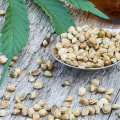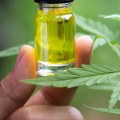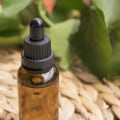The hemp is placed in a chamber that is then filled with carbon dioxide. By applying pressure to the chamber, carbon dioxide is converted into liquid, which then absorbs the oils and flavors of hemp. The end result is a liquid consisting of carbon dioxide and CBD. It is one of the many chemical compounds found in hemp and marijuana plants.
CBD oil is a supplement that can be added to a variety of different products, such as lip balm, lotions, drinks and gummies.
CBD oil
is created by extracting cannabidiol from the flowers and buds of hemp or marijuana plants. The cannabis sativa plant can be classified as hemp or marijuana, depending on the amount of THC, the chemical that creates a high when consumed, in it. For example, hemp plants tend to have very low THC levels to begin with.Therefore, for people who want to avoid THC, CBD from hemp may be a better option. Hemp also has a different spectrum of compounds, meaning that the therapeutic benefits may be different from those of other plants. Supercritical CO2 is formed when CO2 is heated above 31.10°C and pressurized to 1071 psi. It then acquires the properties of gas and liquid (known as supercritical liquid).
Usually, this process is done with a “closed-loop extractor”; a machine that has three main chambers and manipulates CO2 states, as well as extracts cannabinoids and other compounds. CBD production starts with the cultivation of hemp, the plant from which CBD oil is extracted. Farmers select legal hemp strains that have the best potential to produce high levels of CBD and terpenes and low THC levels. Ethanol extraction is perhaps the most popular CBD extraction process, as it is safe, simple and effective.
In this method, high-quality grain alcohol (ethanol) is used as a solvent to separate CBD and other cannabinoids from the plant itself. Ethanol extraction can be performed under warm or cold conditions, and is considered to be extremely time-efficient compared to other CBD extraction processes, such as CO2 extraction. Once CBD is in its purest form and extracted from the plant, it is combined with other ingredients such as flavorings and carrier oil. We will look at each of the types of CBD oil in depth in the following article so that you understand the pros and cons and can decide if one of them is right for you.
In Australia, CBD oil is legal both by prescription and without a prescription in pharmacies across Australia. When this is done right, CBD oil extracted with CO2 is one of the purest in the world, but there is a lot of room for error when done in conditions that are not optimal. When the oil has the desired quality, the mixture can be heated to the boiling point of the alcohol, which is lower than that of CBD oil, to remove the alcohol by boiling. If you have a CBD oil that contains even traces of THC, you can test positive for THC in a road test.
When CBD users first start their research, one of the areas of greatest confusion is about the many types of CBD that exist. This secondary takes advantage of the fact that the different compounds of CBD oil each have their own boiling point. After extraction, it is necessary to distill the extracted oil to separate the individual compounds, including CBD. It involves the use of a light hydrocarbon solvent such as butane, propane, hexane or isopropyl alcohol to extract CBD oil from the hemp plant.
SUPA Naturals offers full spectrum CBD oil tinctures made with CBD-rich hemp plants and near zero THC content. CBD oil, or cannabidiol oil, is an oil created by extracting cannabidiol from a cannabis or hemp plant. From a medical point of view, doctors can prescribe drugs with only CBD, drugs with CBD and THC, and drugs with only THC. Third-party testing is the differentiator between good quality CBD products and products that could be anything labeled CBD.
Real CBD oil stays with the alcohol solution and passes through the filter while unwanted frozen parts are trapped by it. .


